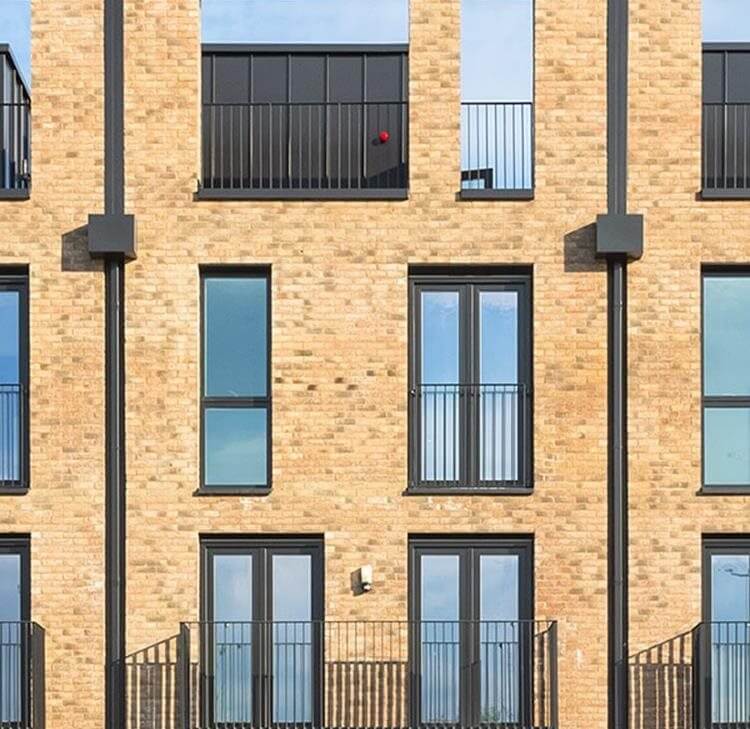Reinstatement for property damage losses – when does it apply?
The Court of Appeal has recently considered the correct test for measuring the indemnity for property damage losses and has provided useful guidance on whether an insured needs to intend to reinstate the property to its pre-loss condition.
Endurance Corporate Capital Ltd v Sartex Quilts & Textiles Ltd [2020] EWCA Civ 308
The Court of Appeal has recently considered the correct test for measuring the indemnity for property damage losses and has provided useful guidance on whether an insured needs to intend to reinstate the property to its pre-loss condition.
The decision contains some useful analysis of the earlier Court of Appeal decision in Great Lakes Insurance UK Ltd v Western Trading Ltd [2016] EWCA Civ 1003.
Background
The Insured was a manufacturer and distributor of household soft furnishings. It had a serious fire in 2011 which severely damaged the buildings and destroyed the plant & machinery.
The Insured sought an indemnity from insurers, Endurance Corporate Capital (“Endurance”) for property damage losses suffered as a result of the fire. Endurance accepted liability in 2011 and in 2013 paid the Insured a sum equal to the diminution in the market value of the site caused by the fire.
After the fire, the Insured’s plans for the business were in a state of flux. Immediately after the fire the Insured wanted to reinstate its manufacturing business at the site but by mid-2011 it began exploring alternative locations.
Eventually these relocation plans fell through and in 2018 the Insured began taking steps to re-build the manufacturing facility at the site of the fire. It sought planning permission and entered into a contract with a supplier to purchase the replacement plant and machinery.
The Insured argued that reinstatement was the correct measure of the loss under the main insuring clause in the Policy. It issued proceedings in 2017 seeking additional sums for the costs of reinstating the buildings and replacing the machinery, giving credit for the amount already paid.
The issue in dispute was whether reinstatement was the correct measure of loss under the main insuring clause which provided:
“…we, the Underwriters, agree to the extent and in the manner provided herein to indemnify the Insured against loss or destruction of or damage to Property caused by or arising from the Perils shown as operative in the Schedule, occurring during the period of this Policy.
Underwriters shall not be liable for more than the Sum Insured stated in the Schedule or in the Policy in respect of each loss or series of losses arising out of one event at each location as stated in the Schedule.”
There was a specific reinstatement clause in the policy but it was common ground that this did not apply because it was subject to a condition that the cost of reinstatement had actually been incurred, which on the facts it had not.
Commercial Court Decision
At the time of the trial in May 2019 (ie 8 years after the loss), the Insured had not commenced any rebuilding or replacement. There was a factual dispute about whether the Insured did in fact intend to reinstate the property.
Deputy High Court Judge (David Railton QC) held that the reinstatement basis was the appropriate measure for calculating the Insured’s loss because, most importantly, he concluded that the Insured’s intention immediately before and at the time of the fire was to use the insured premises for manufacturing. This intention helped determine the value of the insured property to the Insured at the date of the fire.
The Judge also considered it relevant that the Insured did have a fixed intention to carry on the business of manufacturing, albeit the judge accepted that the Insured did not have the fixed intention immediately after the fire as for several years following the fire it looked at alternative sites. The Insured’s intention post-fire was relevant when deciding whether reinstatement was the fair and appropriate measure of indemnity.
The Appeal
Endurance appealed, arguing that the Insured did not (or did not until the limitation period had expired) have a genuine, fixed and settled intention to reinstate the property to the same style and use as before the fire (i.e. to use this particular site for the use of manufacturing). Therefore, Endurance argued, the Insured should not be entitled to recover damages on the reinstatement basis in the absence of an express reinstatement clause. Endurance also argued that if reinstatement was the correct measure for the loss, then there should be a deduction for betterment.
Endurance relied on the earlier decision in Great Lakes Reinsurance (UK) SE v Western Trading Ltd [2016] EWCA Civ 1003 which required the insured in that case to have “not only a genuine but also fixed and settled intention” to use the insurance money to reinstate the property. In Great Lakes, a fire resulted in a dilapidated listed building losing its listing, with the result that the building actually became more valuable because it could be converted into residential flats. Nonetheless the insured in that case sought to recover its losses on a reinstatement basis. The Court of Appeal in Great Lakes considered the insured’s intention and acknowledged there was a real possibility that the insured would not use the money towards a reinstatement. However, if the insured did actually carry out the reinstatement then it would be indemnified for those costs up to the limit of indemnity.
The Court of Appeal Decision in Sartex
The Court of Appeal handed down their decision in Sartex on 5 March 2020, dismissing Endurance’s appeal and upholding the Commercial Court’s assessment of the sum payable under the policy.
The Court of Appeal started by going back to the basics. The purpose of insurance is to put the insured back into the position as if the insured peril had not occurred. There are two ways insurers can do that: (1) replacing/repairing; or (2) paying the deduction in market value.
The starting point (in the absence of an express clause in the policy about how the loss is to be measured), is to look at the use to which the insured was intending to put the property at the time of the loss. The market value measurement will be appropriate when an insured intended to sell the insured property at the time the damage occurs. Other than this, the Court of Appeal could not envisage many situations when reinstatement wouldn’t be the appropriate calculation.
In Sartex it was established that, before and at the point the fire occurred, the Insured intended to use the site for manufacturing and so, prima facie, the appropriate measure of the loss was the cost of reinstatement.
The Court of Appeal held that, as a general rule, any intention to reinstate that an insured forms after the date of loss is irrelevant to how the compensation is to be calculated.
The Court of Appeal considered that the earlier decision in Great Lakes could be distinguished on its facts in two key ways:
- in Great Lakes, the Court’s suggestion of the need for a genuine, fixed and settled intention is expressly limited to a situation where the property has increased in value on account of the fire. This was not the case here.
- The Court’s comments about the insured’s intention to reinstate in Great Lakes were obiter dicta. The insured’s intention to reinstate was not really in dispute. The effect of the Court of Appeal decision in Great Lakes was that the insured was entitled to recover the cost of reinstatement when it had actually been incurred, giving effect to the reinstatement clause.
The Court of Appeal in Sartex added that even if the insured in Great Lakes had taken the reinstatement option, in the absence of an express reinstatement clause in the policy, the insured would still need to give credit for the amount it was better off financially as a result of the fire (ie betterment). The insured could only recover the costs of reinstatement without deducting any financial gain it had obtained if it had actually incurred that reinstatement cost first (in accordance with the reinstatement clause in the policy).
The Court of Appeal in Sartex accepted that there would be some circumstances when it will be relevant to understand if the insured has a genuine intention to use the damages to reinstate the damaged property. The Court gave a few examples, such as if the damaged property has a subjective value or reinstatement will be the more costly option. This is because ascertaining this intention helps to assess if this is fair and reasonable damages award. There were no such circumstances that meant that the Insured’s intention to reinstate after the fire were relevant. It had been established as a fact that the Insured intended to use the site for manufacturing at the date of loss. The purpose of the policy was to put the Insured into a position materially equivalent to that which it would have been in had the fire not occurred. The Insured should be paid the cost of re-establishing the facility by rebuilding the one that was severely damaged or establishing a similar facility elsewhere. Reinstatement was the appropriate measure.
As to betterment, it was in principle accepted that the insurer is entitled to make a deduction for a building or item which is better than the original but the onus is on the insurer to quantify some sort of monetary saving the insured has made. The insurer cannot apply a simple deduction in percentage terms without any explanation or evidence. In Sartex, Endurance had failed to quantify any betterment in pecuniary terms and so the Court of Appeal accepted that the judge at first instance was justified in declining to make any deduction for betterment.
Comment
This judgment offers some useful guidance about when and how reinstatement will apply, and caveats the earlier decision in Great Lakes.
The decision is a reminder of the benefit of having an express clause in the policy as to how damage is to be calculated, even in circumstances where the insured has not actually incurred the cost of reinstating the premises. In the absence of an express clause, there is now a good chance that an insured will be entitled to damages equivalent to the cost of reinstatement if they can demonstrate that they were intending to continue the business at the time of the loss.
Unless an insured is intending to sell up or there is some exceptional reason which makes reinstatement unreasonable, then reinstatement will be the most appropriate method of calculating an insured’s loss.
Insurers can reduce a reinstatement damages payment if they can find suitable alternative premises to the one damaged (to show that reinstating the damaged property is disproportionate) or if they can show (and quantify) that the insured has obtained a monetary benefit from the replacement building or item (i.e. betterment).







![Contractual liability for all inclusive treatment: Bartolomucci v Circle Health Group Limited [2025]](/getattachment/95f9533b-f99c-4fcc-b8d5-3f93904b8242/shutterstock_1265400856.jpg?variant=HeroImageTabletVariantDefinition)

































